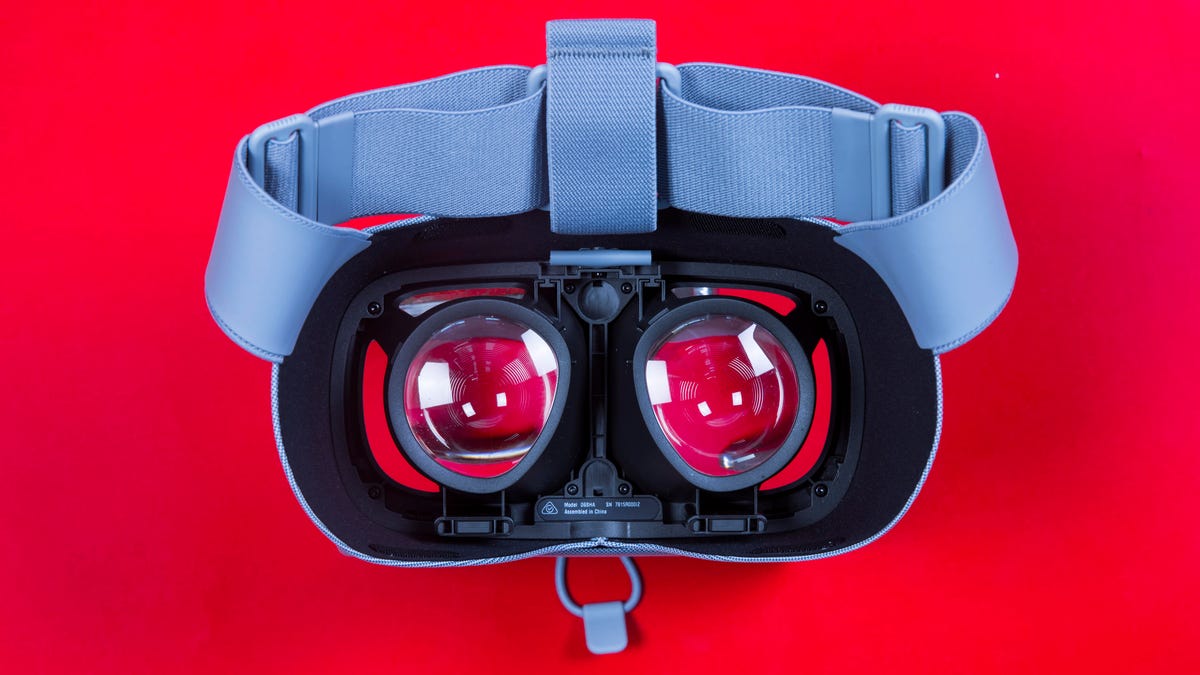Technologies
Samsung and Google Combine Forces in New Mixed Reality Partnership
Here’s what we think this new tech will bring.

This story is part of Samsung Event, CNET’s collection of news, tips and advice around Samsung’s most popular products.
Samsung made a lot of impressive announcements during its Galaxy S23 launch event last week. But an out-of-the-blue partnership with Qualcomm and Google on an upcoming mixed-reality platform certainly caught fans off guard. The new «XR» technology is an umbrella term for the intersection of AR, VR and mixed reality, or MR.
In a year that’ll see a new PlayStation VR headset, a new HTC Vive VR headset, a new Meta VR headset and likely a first-ever Apple VR headset, how will this Samsung product (or products) end up changing the game, and when could it arrive?
Samsung’s on-stage announcement was incredibly vague, with Google’s Hiroshi Lockheimer, head of Android, and Qualcomm CEO Cristiano Amon promising new hardware and software that’ll bring new experiences. But Samsung’s and Google’s histories in VR (and AR), along with Qualcomm’s major presence in the field, can point to some answers. So, too, can the last major Google and Samsung partnership two years ago, on smartwatches.
In 2021, Google’s partnership with Samsung began a rethinking of its smartwatch lineup, which also led to a Pixel Watch last fall. It’s likely that this new Samsung-Google-Qualcomm partnership could play out in a similar way in AR and VR. In this instance, though, both Google and Samsung will be making long-overdue returns to the VR/AR spaces they’ve both stepped away from for several years.
Here’s why Samsung and Google entering the field makes sense, and is even sorely needed.
VR and AR needs to work with phones again
VR goggles used to work with phones, half a decade ago. Back in the days of the Samsung Gear VR and Google’s Daydream View, you’d drop a phone into a cheap set of goggles that would use the device as a VR screen. It was a fun novelty back then, and greatly expanded access, but also had its limits. In 2023, oddly, VR headsets barely work with phones at all.
It’s annoying because most of us live our lives on our phones. VR, meanwhile, tends to stand alone. The Meta Quest 2 has slowly developed hooks into phones via its pairing app, but doesn’t have nearly enough cross-device intelligence.
Qualcomm has been trying to solve this idea already on its own. Via an early wave of AR glasses and certain Android phones, the company has been developing tools to bridge apps and experiences, and also have glasses directly connected to phones.
That’s a lot easier to do with official Android support. Google would enable that, and this Samsung-Qualcomm-Google partnership seems like a key to exploring how that would work with new VR headsets, or AR glasses, or both.
Right now, VR is the future. Then, AR
No one’s perfected AR glasses yet, although the hardware pieces are slowly coming together. In the meantime, standalone VR headsets using built-in cameras to show «passthrough» video of the real world, with virtual reality experiences overlaid, is the fastest solution to AR. It’s also called «mixed reality,» and it’s what the Meta Quest Pro does in some apps. Apple’s upcoming mixed reality headset should work the same way. HTC’s Vive XR Elite coming this February? Same thing.
I’d expect Samsung and Google to start with developing a similar lightweight VR headset with mixed reality features first, using similar Qualcomm chips as other hardware (or a next-gen chipset). After that, AR glasses.
Qualcomm has already promised a new generation of low-power wireless AR glasses that will work with next-gen phones over the next three years, using a new AR2 Gen 1 chipset announced last fall. Samsung’s Google partnership might also involve exploring how to build phones and glasses that could work together in the years to come.
Google’s already dipping its toes into assistive AR glasses research, and has a decade of experience in AR and VR before that. Samsung has all of its experience with the Gear VR and working with Oculus. Between the two, along with Qualcomm, it seems like there’s plenty of team wisdom.
A new OS (think smartwatches)
Evolving Android into a new software experience for VR and AR is the biggest challenge and opportunity, and it would make a ton of sense for Samsung to lean on Google here. VR headsets of the last five years have tried to go it alone with dedicated app stores, much like the Meta Quest. But the whole spirit of the idea of «the metaverse» is cross-device compatibility. And, in theory, easy app support.
Samsung shifted strategy on its watches by adopting Google’s WearOS as part of a partnership announced two years ago, aiming to bring Samsung’s watches closer to Google’s Android OS. But Samsung also helped Google think about higher-end health and hardware features to advance its aging smartwatch lineup. Which brings us to…
A road to Pixel hardware?
At some point, you’d imagine, Google will try to make its own AR/VR hardware again. The team behind Google’s Daydream, led by Clay Bavor, has shifted focus into Google Labs, working on more experimental projects like Project Starline (and those research-based assistive AR glasses).
It seems highly likely that the road to Google’s future XR hardware will run through Samsung in much the same way as smartwatches ahead of the Pixel Watch. The Galaxy Watch 4 became the first experiment in Wear OS 3, and then Google entered the waters over a year later with a Fitbit-infused Pixel Watch.
AR and VR headsets are significantly more complicated. Maybe Google waits a bit longer on a Pixel device. Maybe, as both Google’s Lockheimer and Qualcomm’s Amon seemed to suggest, there will be a variety of forms and possibilities, including some that aren’t headsets at all. Remember: Google’s idea of «ambient computing» involves immersive tech from every angle, including stuff that isn’t worn.
What year will this emerge?
That’s the hard question here. It seems likely that Google will dive into this partnership more at its I/O developer conference that usually happens in May, which would be right before Apple would likely go over its VR headset at WWDC. We haven’t seen any hint of any actual hardware yet. It’s not impossible that a standalone VR headset in the spirit of the Meta Quest could materialize sometime sooner than later, but it would be a huge surprise if anything arrived in 2023.
When Samsung and Google announced the Wear OS 3 partnership in 2021, it came with a teaser photo of the watch itself and a promise of hardware by year’s end. No such statements were made or shown this time and 2024 would seem like the earliest likely launch date.
And at any rate, 2023 is looking like a turbulent year for the greater XR world. While plenty of VR hardware is coming, it’s unclear who can actually afford it. For Samsung and Google, the best bet might be to wait out this crowded year and figure out how to make improved, possibly more affordable hardware in 2024.
Technologies
Today’s NYT Strands Hints, Answers and Help for Dec. 5 #642
Here are hints and answers for the NYT Strands puzzle for Dec. 5, No. 642.

Looking for the most recent Strands answer? Click here for our daily Strands hints, as well as our daily answers and hints for The New York Times Mini Crossword, Wordle, Connections and Connections: Sports Edition puzzles.
Today’s NYT Strands puzzle is a fun one, and the theme is interesting. Some of the answers are difficult to unscramble, so if you need hints and answers, read on.
I go into depth about the rules for Strands in this story.
If you’re looking for today’s Wordle, Connections and Mini Crossword answers, you can visit CNET’s NYT puzzle hints page.
Read more: NYT Connections Turns 1: These Are the 5 Toughest Puzzles So Far
Hint for today’s Strands puzzle
Today’s Strands theme is: Feeling peckish?
If that doesn’t help you, here’s a clue: Can I see a menu?
Clue words to unlock in-game hints
Your goal is to find hidden words that fit the puzzle’s theme. If you’re stuck, find any words you can. Every time you find three words of four letters or more, Strands will reveal one of the theme words. These are the words I used to get those hints but any words of four or more letters that you find will work:
- BAKE, BAKER, BONE, BONES, SIRS, FUNS, FACT, BUTT, DIET, DIETS, GREW, STEW, GOUT, DINE, NEST, NETS, TEAK
Answers for today’s Strands puzzle
These are the answers that tie into the theme. The goal of the puzzle is to find them all, including the spangram, a theme word that reaches from one side of the puzzle to the other. When you have all of them (I originally thought there were always eight but learned that the number can vary), every letter on the board will be used. Here are the nonspangram answers:
- BAKERY, CAFE, BISTRO, BUFFET, BREWERY, STEAKHOUSE
Today’s Strands spangram
Today’s Strands spangram is DININGOUT. To find it, start with the D that is three letters to the right on the top row, and wind down.
Don’t miss any of our unbiased tech content and lab-based reviews. Add CNET as a preferred Google source.
Technologies
Today’s NYT Mini Crossword Answers for Friday, Dec. 5
Here are the answers for The New York Times Mini Crossword for Dec. 5.

Looking for the most recent Mini Crossword answer? Click here for today’s Mini Crossword hints, as well as our daily answers and hints for The New York Times Wordle, Strands, Connections and Connections: Sports Edition puzzles.
Need some help with today’s Mini Crossword? Three of the clues involve a now-infamous Gen Z/Gen Alpha joke, so you might want to have a young person nearby. Read on. And if you could use some hints and guidance for daily solving, check out our Mini Crossword tips.
If you’re looking for today’s Wordle, Connections, Connections: Sports Edition and Strands answers, you can visit CNET’s NYT puzzle hints page.
Read more: Tips and Tricks for Solving The New York Times Mini Crossword
Let’s get to those Mini Crossword clues and answers.
Mini across clues and answers
1A clue: Beaver’s building project
Answer: DAM
4A clue: Unit of distance originally equivalent to 1,000 paces
Answer: MILE
5A clue: Number of dwarfs or deadly sins
Answer: SEVEN
6A clue: Extra-large film format
Answer: IMAX
7A clue: Crosses (out)
Answer: XES
Mini down clues and answers
1D clue: Difficult-to-work-with stars
Answer: DIVAS
2D clue: U.S. soccer star ___ Morgan
Answer: ALEX
3D clue: Roughly half of the adult population
Answer: MEN
4D clue: 5-Down-5-Across, for one
Answer: MEME
5D clue: Broadway musical about the wives of Henry VIII
Answer: SIX
Don’t miss any of our unbiased tech content and lab-based reviews. Add CNET as a preferred Google source.
Technologies
The Mystery of the iPhone 17 Pro’s Missing Night Mode for Portraits
Is it a bug? Is it a technical issue? Or did Apple just yank a camera feature that wasn’t popular?

It’s a mystery. Night mode isn’t available in Portrait Mode on the iPhone 17 Pro, and no one seems to know why. Yet.
Night mode automatically brightens photos and captures more details, even in low-light conditions. You can adjust the exposure time manually. In Portrait mode, the camera focuses sharply on the subject you’re snapping and blurs the background, creating a depth-of-field effect.
The first clue that Night mode for Portrait mode was gone came from an Apple support document titled Take Night mode photos with your iPhone camera. It states what many iPhone aficionados already know: «Night mode automatically brightens photos and captures more detail in low light.»
Don’t miss any of our unbiased tech content and lab-based reviews. Add CNET as a preferred Google source.
Night mode for the iPhone 17 Pro is listed in two separate parts of the iPhone online user guide (here and also here) for selfies and time-lapse photos. But it isn’t included on the guide’s list for snapping Night mode photos in Portrait mode. The feature is still available on iPhone Pro and Pro Max on the 12, 13, 14, 15 and 16 series.
Upon investigation, CNET staffers verified that, indeed, Night mode is no longer an option in Portrait mode with the iPhone 17 Pro.
An Apple representative didn’t immediately respond to a request for comment.
When the iPhone 17 Pro was launched in September, Andrew Lanxon, CNET’s lead photographer in Europe, was impressed by the camera upgrades over the iPhone 16 Pro, including optical zoom that doubled to 8x, a telephoto camera sensor 56% larger than before and 48 megapixels of resolution.
Lanxon, a professional photographer and YouTuber, was excited to get shooting with the iPhone 17 Pro. But apparently, he will have to do without Night mode in Portrait mode.
Why did Apple do it?
Why was Night mode removed? «There doesn’t appear to be a hardware reason for it,» said CNET senior writer Jeff Carlson. «The Lidar camera that helps with low-light focusing and depth perception is still there. Perhaps it’s a software issue, but as of the iOS 26.2 release candidate, the feature isn’t present.»
Carlson found it curious that it’s taken three months since the launch of the new pro model before people noticed that it’s missing. He speculates that the feature was possibly removed because it «wasn’t being used and Apple could devote other processing resources elsewhere,» he said. «Perhaps something broke in the development of the new operating system and revamped Camera app, and it hasn’t been a high enough priority to fix in the regular release schedule.
«People have gotten used to having iPhone models that enable shots that are otherwise difficult for smartphone cameras, especially on a flagship like the iPhone 17 Pro,» Carlson said. «I hope the feature returns to give everyone the most control over the photos they capture.»
One parallel might be what Samsung did earlier this year — removing S Pen Bluetooth connectivity on the new S25 Ultra. Samsung said they removed the feature because not many people were using it. Is Apple doing the same thing with Night mode for portraits?
Some people miss it, some don’t
A subreddit on the topic appeared to be a mix of «who cares» and «oh darn.» Redditor kaoss_pad was «low key happy» that the feature had vanished, saying that «it would often surprise me and activate when I didn’t want it and ruin a moment.»
Some Redditors weren’t even aware of the feature. CultofCedar posted, «lol didn’t even notice that wasn’t a thing,» and Successful-Cover5433 wrote, «I didn’t even know you could.»
A couple of folks weren’t happy about the mysterious disappearance, including nsfdrag, who posted, «Kind of a bummer, I like the feature.»
-

 Technologies3 года ago
Technologies3 года agoTech Companies Need to Be Held Accountable for Security, Experts Say
-

 Technologies3 года ago
Technologies3 года agoBest Handheld Game Console in 2023
-

 Technologies3 года ago
Technologies3 года agoTighten Up Your VR Game With the Best Head Straps for Quest 2
-

 Technologies4 года ago
Technologies4 года agoBlack Friday 2021: The best deals on TVs, headphones, kitchenware, and more
-

 Technologies4 года ago
Technologies4 года agoVerum, Wickr and Threema: next generation secured messengers
-

 Technologies4 года ago
Technologies4 года agoGoogle to require vaccinations as Silicon Valley rethinks return-to-office policies
-

 Technologies4 года ago
Technologies4 года agoOlivia Harlan Dekker for Verum Messenger
-

 Technologies4 года ago
Technologies4 года agoiPhone 13 event: How to watch Apple’s big announcement tomorrow
